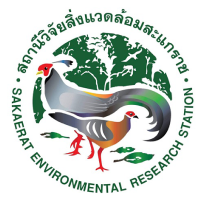Keywords :
Amphibians; Reptiles
บทคัดย่อ :
Although it had been suspected for some years that the densities of floor- dwelling amphibians and reptiles were lower in Bornean rain forest than in comparable situations in Central America, Scott (1976) presented the first un- equivocal evidence, comparing data from 39 quadrats in two Costa Rican forests with those from 402 quadrats at Nanga Tekalit, Sarawak, in Borneo (Lloyd et al. 1968). Even though Scott s analysis is based on relatively few quadrats from Costa Rica, his data were gathered in both wet and dry seasons of two years at each site. Data from Panamanian forests (Heatwole and Sexton 1966), though not obtained exactly as those from Costa Rica and Borneo, indicate that the higher densities probably apply generally to wet forests of Central America. With additional data from Bornean, Malayan, and Thai forests (Inger 1979), one may now ask whether the contrast between Central America and the one Bornean rain forest at Nanga Tekalit represents a general interhemispheric pattern. If so, important ecosystemic differences would be suggested. Scott attempted to interpret the difference between Costa Rican and Bornean communities in terms of some aspect of ecosystem function. Reasons for rejecting the particular aspect Scott proposed will be discussed below, and alternative interpretations will be put forward
เอกสารอ้างอิง :
Inger, R. F. (1980). Densities of floor-dwelling frogs and lizards in lowland forests of Southeast Asia and Central America. The American Naturalist, 115(6), 761-770.



